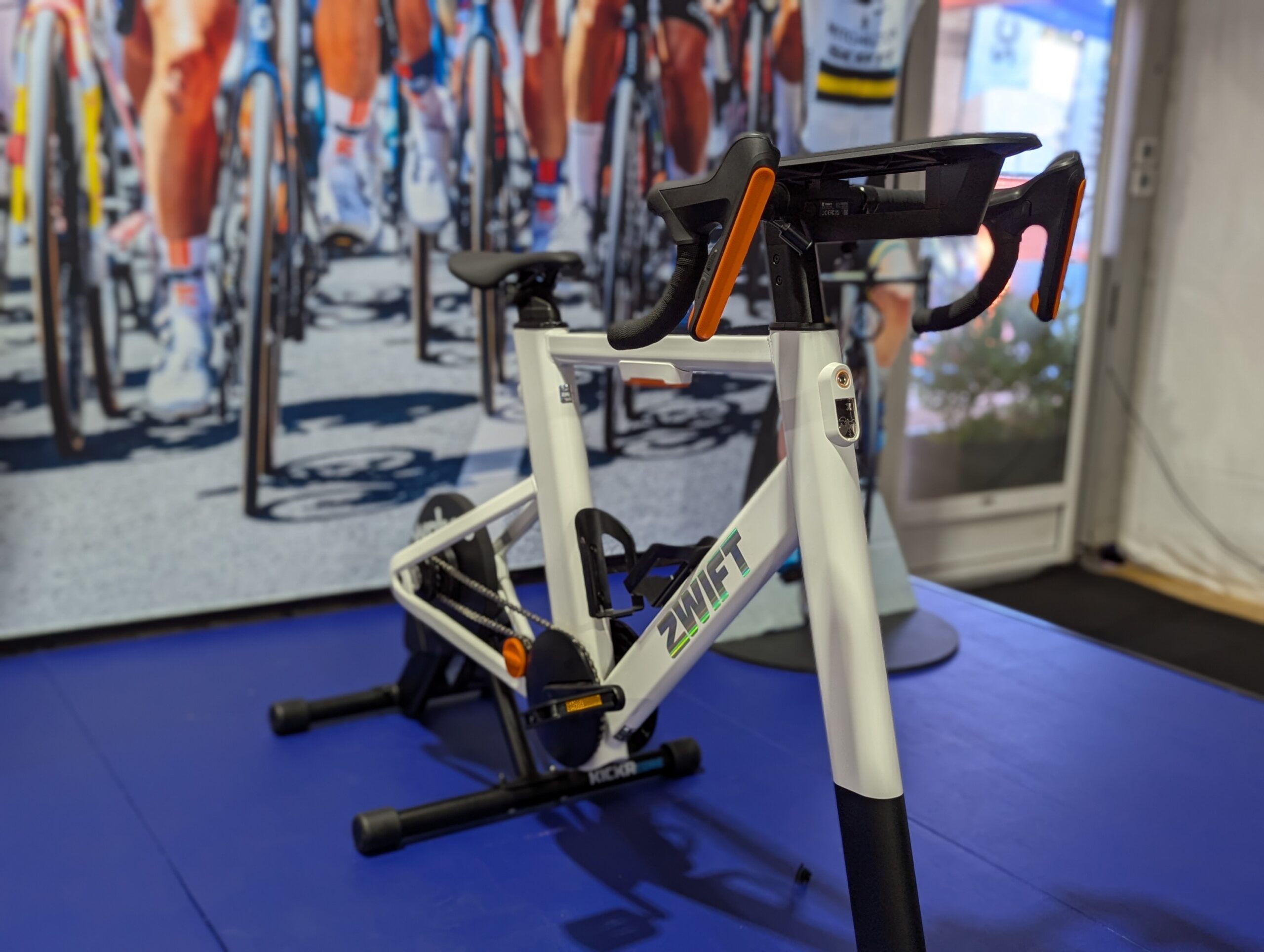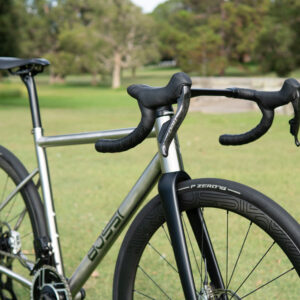Indoor cycling app Zwift has upped the ante with its first foray into indoor bikes. Contributor Luke Meers ran it through its paces.
The older I get, the more likely I seem to change my planned outdoor ride for an indoor session. Some may call it being soft, but I’m opting for wise. It doesn’t take much rain, wind, or cold temperatures to keep me inside. My growing proclivity for indoor sessions has been aided by the rise and improvement of platforms like Zwift, with its engaging, immersive gamification of the cycling experience, or TrainerRoad, with its AI-generated adaptive training plans, which largely revolve around indoor interval sessions. This is also coupled with the sheer time efficiency of indoor training, the old adage being that an hour on the ergo is worth two outside.
All this is to say that my Wahoo Kickr has had a very good workout over the years and that I’ve discovered the destructive acceleration of the corrosion process that happens when our bodies drip that lovely electrolytic solution known as sweat all over an indoor bike. I’ve caused cable failure, thread seizure, and jammed bearings. Being too lazy to remove the bike from the trainer and wash it down after every session, my solution has been to run a sacrificial bike on the trainer. However, the poor old aluminium Cannondale is nearly completely seized now. So, it is with great interest that I have been able to review an alternative solution to my dilemma, the Zwift Ride.
The Zwift Ride is quite a clever integration of several components to deliver a complete trainer package designed to optimise the use of the Zwift platform. The main parts are a Kickr Core trainer, the Zwift Cog and the newest part, the bike itself. The bike is a heavily built frame approximating a road frame with drop handlebars. It includes multiple adjustment points for saddle height, handlebar height, reach and more. These adjustments feel more like a bike in the gym with marks for position and easy sliding sections. Seemingly odd at first is the single leg at the front, where a fork and front wheel would usually be. At first glance, it looks narrow and unstable, but the sheer rigidity of the frame means that the stability from the trainer at the rear is more than sufficient to support the whole unit. A critical point of the package are the buttons on the handlebars, which allow direct control of the Zwift online environment while riding rather than reaching for your computer keys or phone. It also allows for shifting and steering within Zwift. More on these shortly.
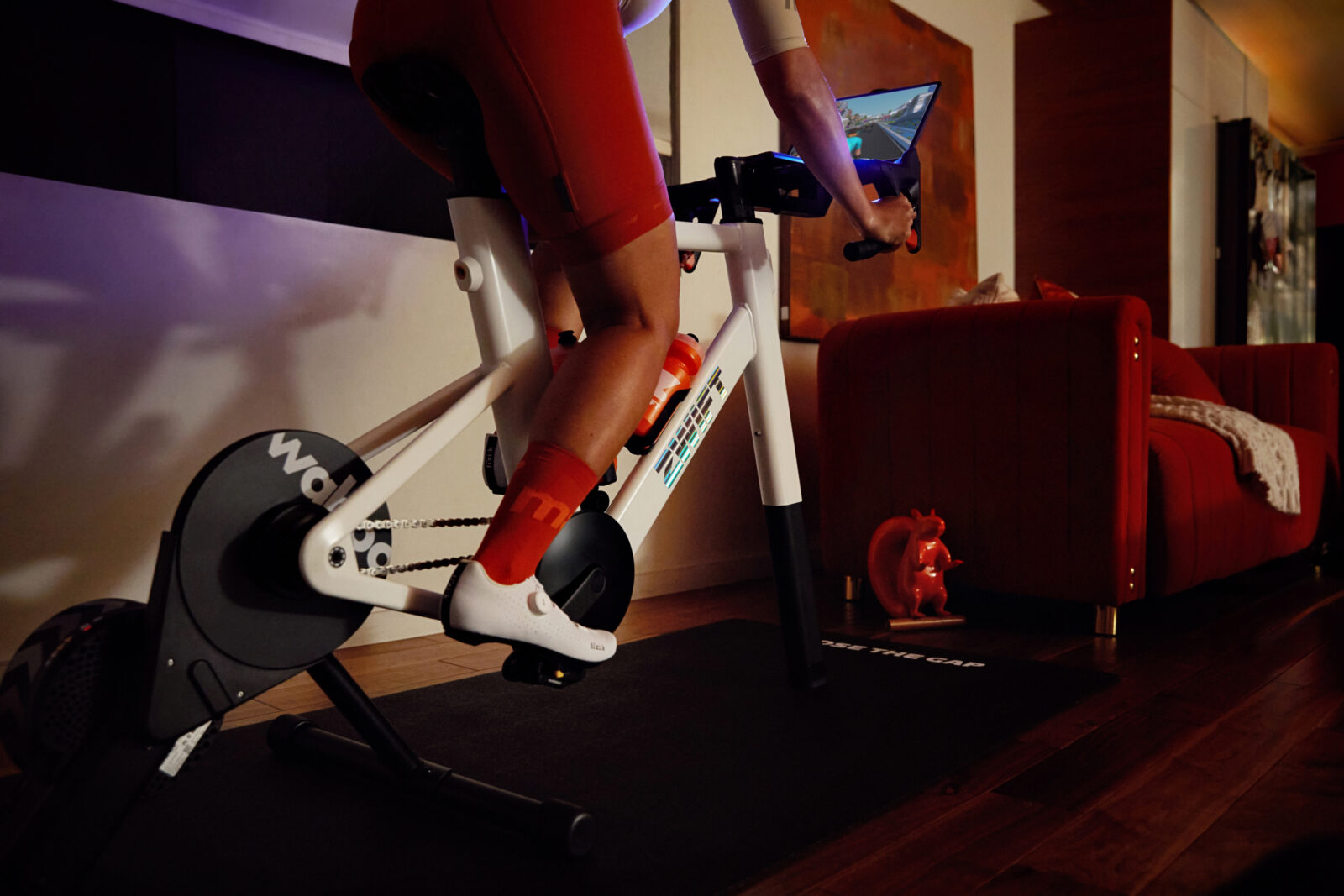
Setup
The day my Zwift Ride arrived, I was shocked to see the sheer number of boxes. The poor delivery driver would have had nothing else in the van. By extension, much of the setup process is just unboxing and removing all the components. Multiple instruction booklets are pleasingly graphically designed in the Zwift kind of style. Assembly was relatively straightforward when following the step-by-step guides. The only tool required was a supplied Allen key (also with a matching Zwift-orange handle). This tool is all you need to adjust any of the position/fit elements of the bike and handily magnetically clips in under the top tube. The frame adjustment allows for riders of around 150cm to around 200cm in height.
When manoeuvring all the bits into place, the heavy, robust, and oversized design of the steel frame is very evident. The bike weighs 17kg in total (without the trainer). However, this is a positive rather than a negative, as the frame feels abundantly strong and reassuring. The Kickr Core paired easily with my PC, and a simple press of the “Z” button on the bars switches on the controls, which then pair directly with the computer.
The Kickr Core is fitted with the Zwift Cog, which means the whole bike is mechanically a single-speed, and all shifting is done virtually. From my perspective, this simplification is a huge positive, especially regarding reducing the number of drivetrain components that can corrode easily. Without a rear derailleur to hold chain tension, a separate tensioner is needed. This sits in front of the rear axle and is released to install or remove the frame from the trainer. This Zwift frame can be purchased separately and will fit with most trainers, but it will only work if the trainer is compatible with single-speed use online.
In addition to the control buttons, the front end has a storage area extending forward from the bars’ centre. I guess this is designed for your phone, snacks, etc., and can also be extended with an optional tablet mount.
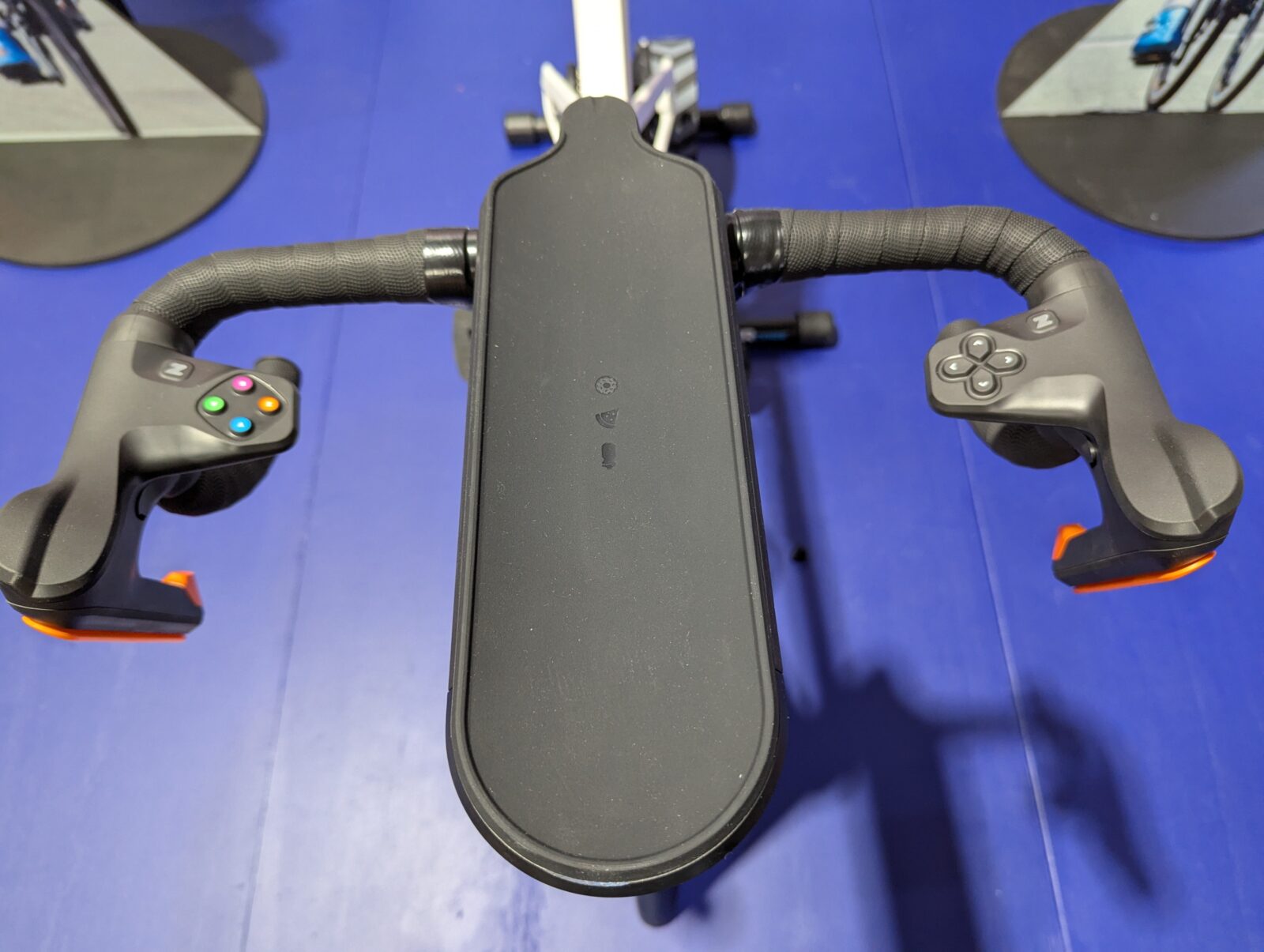
In use
Once set up, adjustment, and pairing are done, it is time to ride. When you first hop on the bike, the weight and sturdiness of the frame are immediately evident. It feels reassuring and quite pleasant to be on. When riding under load, it can be almost too rigid. When many products on the market allow roll and “natural movement” of trainer bikes, it is perhaps a slight miss that the Zwift bike doesn’t allow for anything other than the little bit of slack inherent in the Wahoo Kickr Core. In most situations, this doesn’t bother me. Still, when sprinting on the trainer, particularly at the end of a Zwift race, a little more movement would be beneficial to allow the rider’s body to be in a more natural flow.
The noise level is pretty good, similar to any current Wahoo trainer, and probably even quieter, given the lack of a rear derailleur. Speaking of which, the chain noise could be almost eliminated if the Zwift bike utilised a belt drive rather than a chain. The main reason not to use a belt is shifting, which is unnecessary here, so it seems like an easy win to convert this system to a belt, thus reducing the need for lubrication and chain maintenance. This may be an improvement for Zwift/Wahoo in the future.
The main point of difference experientially between the Zwift bike and simply riding my standard trainer setup are the front-end controls. The main control buttons are integrated neatly into the tops of the bars within easy reach of thumbs when riding in the hoods. The right handset of buttons function like a video game controller with a select button, a back button, and buttons that largely function to give “Ride-ons” to other Zwifters and to use the various Zwift powerups. The buttons on the left-hand side of the tops are directional for navigating menus. The shifter paddles are placed on the “brake levers”, mimicking normal shifting and can be programmed to shift like Shimano or SRAM. At the front of the levers are the steering paddles, allowing in-game movement, although I didn’t find many occasions to use these. Overall, the control platform seems quite well thought out, and the buttons are fairly robust and have enough feedback to know when you’ve pushed them. This integration elevates the virtual world experience and is the single biggest reason someone might want to upgrade to the Zwift Ride. These controllers have integrated, rechargeable batteries that purportedly last 20 hours. I didn’t need to plug in at all during the nearly 20 hours I used the bike.
Connectivity with the Zwift application is always relatively quick and seamless. A downside is that the controller buttons (at this point) don’t seem to be able to control third-party applications such as TrainerRoad or MyWhoosh. The Kickr Core still pairs straightforwardly with other apps, and the lack of gears is irrelevant when using erg mode. However, if you wanted to use this bike in “free ride” mode with other applications, that could be an issue. That said, the people likely to want this product will probably be Zwift fans and may not need to diversify much.
The current price in Australia is $2299.95 plus shipping – not cheap, but essentially $1400 on top of the trainer’s price. However, for regular Zwifters who don’t want to compromise their regular road bike or get a sacrificial trainer bike, the Zwift ride provides a valid and enticing option. It is much cheaper than many of the “full bike” trainer options on the market to date.
Summing up
Overall, the Zwift Ride is a well-thought-out and implemented platform that will make keen Zwifters worldwide happy. The clever integration with the Kickr Core keeps costs lower than they otherwise might be. Integrating the Wahoo trainer and cog with the Zwift Ride frame is pleasingly well-designed, and almost every aspect of the indoor training experience is considered. This product adds another level of enjoyment and engagement to the indoor training experience. The days of the ‘dreaded indoor session’ may be gone forever.
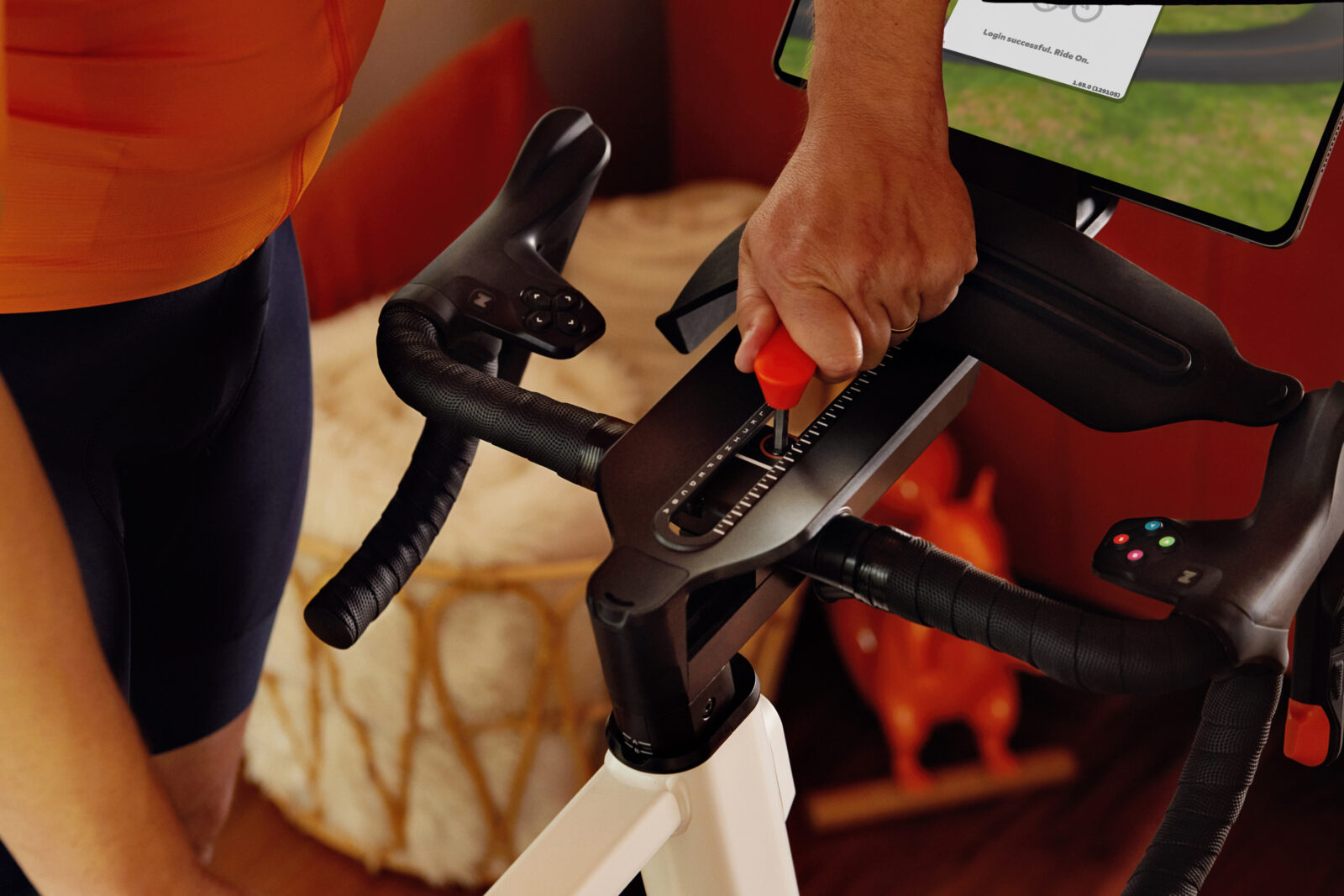
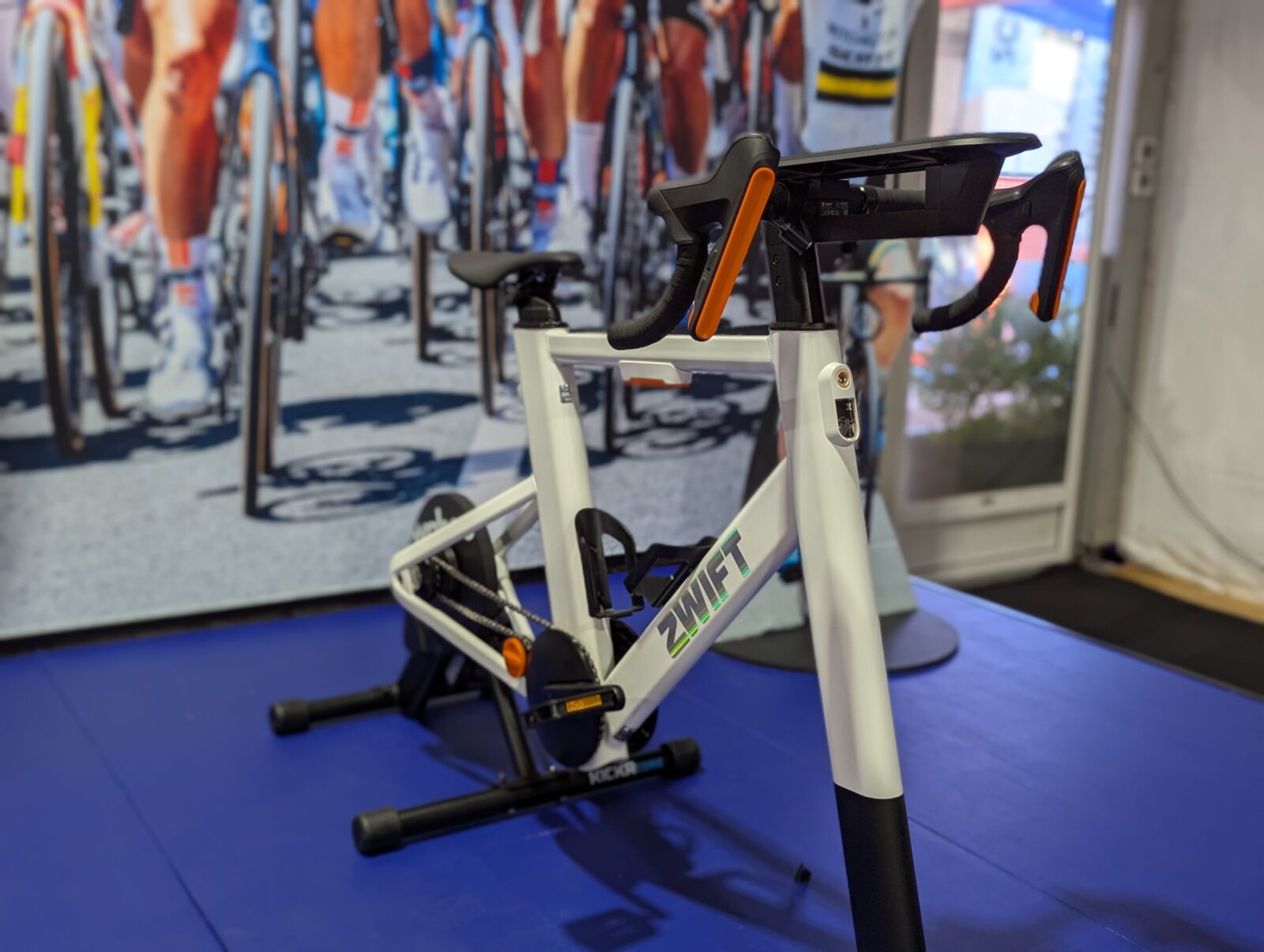
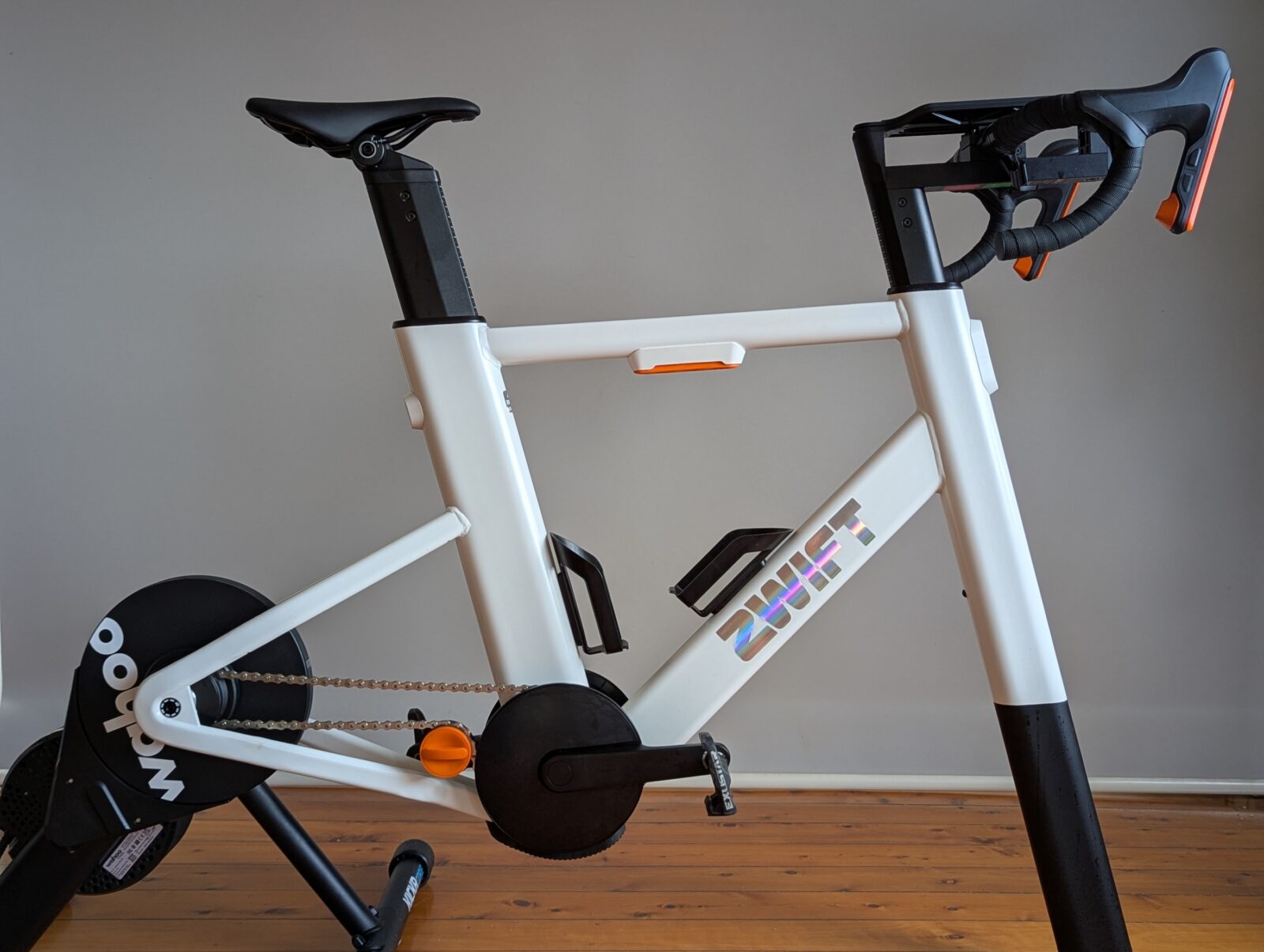

Luke Meers
Luke Meers - Wollongong-based writer Luke is a strong and competitive bike rider. He writes regular tech and gear reviews for Bicycling Australia and isn’t afraid to get his hands dirty.
